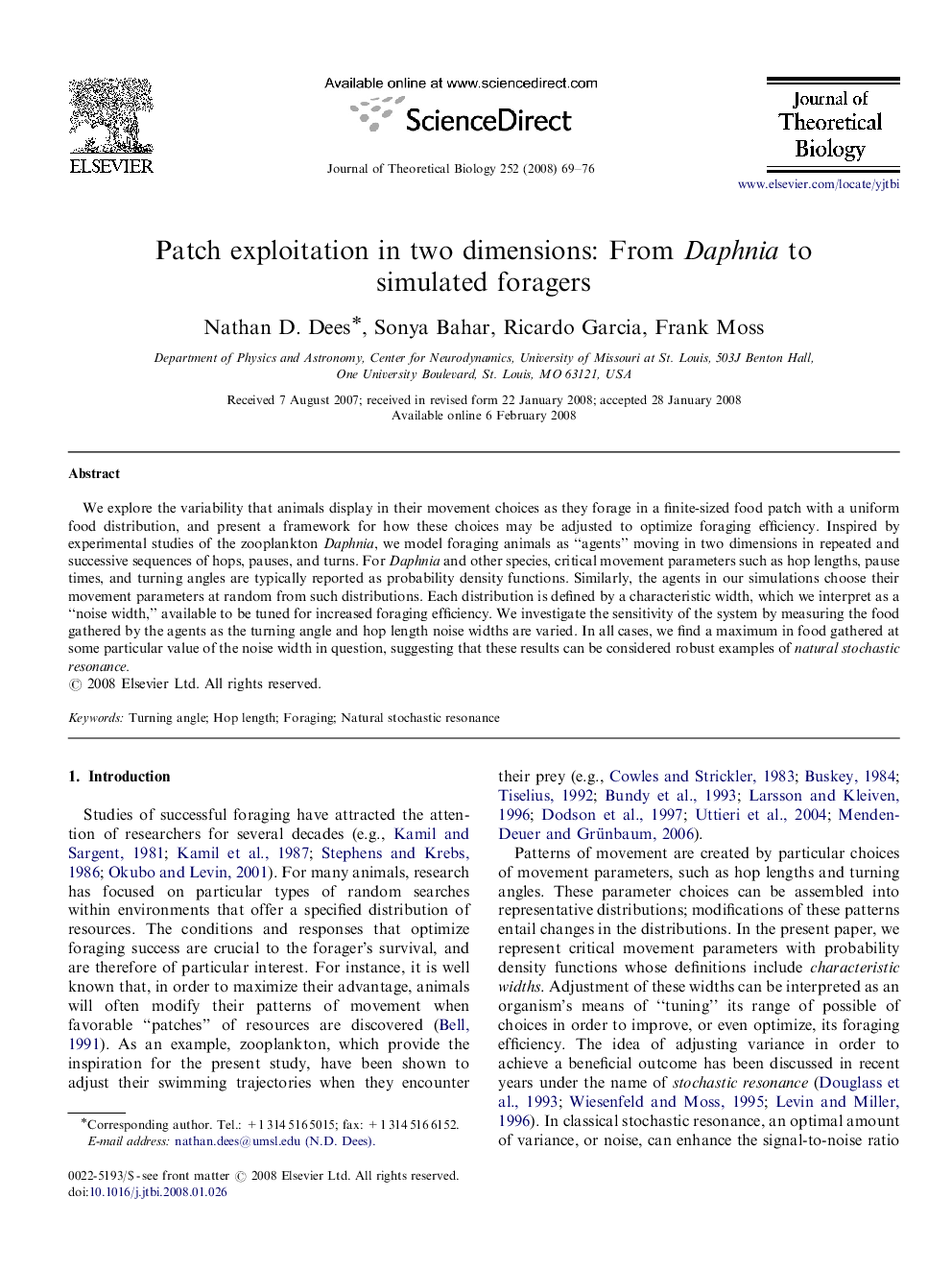| Article ID | Journal | Published Year | Pages | File Type |
|---|---|---|---|---|
| 4498345 | Journal of Theoretical Biology | 2008 | 8 Pages |
Abstract
We explore the variability that animals display in their movement choices as they forage in a finite-sized food patch with a uniform food distribution, and present a framework for how these choices may be adjusted to optimize foraging efficiency. Inspired by experimental studies of the zooplankton Daphnia, we model foraging animals as “agents” moving in two dimensions in repeated and successive sequences of hops, pauses, and turns. For Daphnia and other species, critical movement parameters such as hop lengths, pause times, and turning angles are typically reported as probability density functions. Similarly, the agents in our simulations choose their movement parameters at random from such distributions. Each distribution is defined by a characteristic width, which we interpret as a “noise width,” available to be tuned for increased foraging efficiency. We investigate the sensitivity of the system by measuring the food gathered by the agents as the turning angle and hop length noise widths are varied. In all cases, we find a maximum in food gathered at some particular value of the noise width in question, suggesting that these results can be considered robust examples of natural stochastic resonance.
Keywords
Related Topics
Life Sciences
Agricultural and Biological Sciences
Agricultural and Biological Sciences (General)
Authors
Nathan D. Dees, Sonya Bahar, Ricardo Garcia, Frank Moss,
